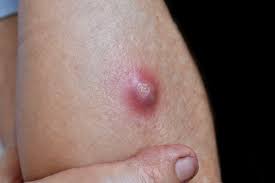Key Factors in Incision and Drainage of Abscesses

Abscesses are localized infections characterized by the accumulation of pus within tissues. They can occur anywhere in the body and often result from bacterial infections. The treatment of abscesses typically involves a procedure known as incision and drainage. This article delves into the essential aspects of this procedure, Incision and Drainage of Abscesses Dubai, preparation, technique, and aftercare.
Understanding Abscesses
An abscess is a collection of pus that forms as a result of an infection. The infection causes the body's immune system to produce pus, a thick fluid that consists of dead white blood cells, bacteria, and tissue debris. Abscesses can be painful and lead to swelling and redness in the affected area. Common locations for abscesses include the skin, teeth, and internal organs.
Indications for Incision and Drainage
Incision and drainage (I&D) is a procedure performed to relieve the pressure caused by an abscess and to promote healing. It is typically indicated when:
- Size and Severity: The abscess is large and causing significant discomfort or functional impairment.
- Failure of Conservative Measures: The abscess has not improved with conservative treatments, such as antibiotics alone.
- Risk of Complications: There is a risk of the abscess spreading to adjacent tissues or becoming a more severe infection.
In cases where an abscess is small and superficial, it might be treated with antibiotics and home care. However, larger or deeper abscesses often require incision and drainage to ensure proper treatment.
Preparing for Incision and Drainage
Preparation for incision and drainage involves several key steps:
- Medical Evaluation: A healthcare provider will evaluate the abscess to determine the appropriate course of action. This evaluation may include a physical examination and, in some cases, imaging studies to assess the size and depth of the abscess.
- Anesthesia: Local anesthesia is typically used to numb the area around the abscess. This ensures that the patient remains comfortable during the procedure. In some cases, sedation or general anesthesia may be considered, especially for more extensive procedures or if the patient is particularly anxious.
- Sterilization: The area surrounding the abscess is cleaned and sterilized to reduce the risk of infection. This step is crucial in preventing the introduction of additional bacteria during the procedure.
The Incision and Drainage Procedure
The procedure involves several key steps:
- Incision: A small incision is made over the abscess. The goal is to create an opening that allows the pus to be expelled. The size of the incision will depend on the size of the abscess. In some cases, the incision may be made with a scalpel, while in others, a needle may be used to puncture the abscess.
- Drainage: Once the incision is made, the pus is gently drained from the abscess cavity. The healthcare provider may use a sterile instrument to facilitate the drainage and to ensure that all of the pus is removed. In some cases, a small tube or drain may be inserted to allow for continued drainage and to prevent the abscess from refilling.
- Cleaning and Packing: After the pus has been drained, the abscess cavity is cleaned to remove any residual pus and debris. The cavity may be packed with sterile gauze or other material to promote healing and to prevent the abscess from closing prematurely.
- Closure: Depending on the size and depth of the incision, it may be left open to allow for continued drainage, or it may be closed with sutures or adhesive strips. The decision on whether to close the incision is based on the specific characteristics of the abscess and the preference of the healthcare provider.
Post-Procedure Care
Proper aftercare is essential for optimal healing and to prevent complications:
- Wound Care: The incision site should be kept clean and dry. Patients may need to change dressings regularly and follow specific instructions provided by their healthcare provider. It is important to avoid picking at or scratching the area to prevent infection.
- Pain Management: Pain and discomfort are common after the procedure. Over-the-counter pain relievers or medications prescribed by the healthcare provider can help manage pain and reduce inflammation.
- Follow-Up Visits: Regular follow-up visits may be necessary to monitor the healing process and to ensure that the abscess is resolving as expected. During these visits, the healthcare provider will assess the wound and may make additional recommendations for care.
- Watch for Complications: Patients should be vigilant for signs of complications, such as increased redness, swelling, or discharge from the incision site. If any of these symptoms occur, or if there is a fever or worsening pain, the healthcare provider should be contacted promptly.
Potential Complications
While incision and drainage is generally a safe procedure, there are potential complications to be aware of:
- Infection: There is a risk of developing a secondary infection at the incision site. Proper wound care and hygiene are crucial in minimizing this risk.
- Recurrence: In some cases, abscesses can recur if the underlying cause is not addressed. Ensuring that any contributing factors, such as underlying infections or chronic conditions, are managed is important for preventing recurrence.
- Scarring: Depending on the size and location of the incision, some degree of scarring may occur. This is a normal part of the healing process, but the appearance of scars can be minimized with proper care and, if necessary, cosmetic treatments.
Conclusion
Incision and drainage of abscesses is a vital procedure for managing infections and promoting healing. Understanding the key factors involved in this procedure—from indications and preparation to post-procedure care—can help patients make informed decisions and achieve the best possible outcomes. If you have an abscess or suspect you might need this procedure, consulting with a healthcare professional is essential for determining the appropriate treatment plan and ensuring optimal care.